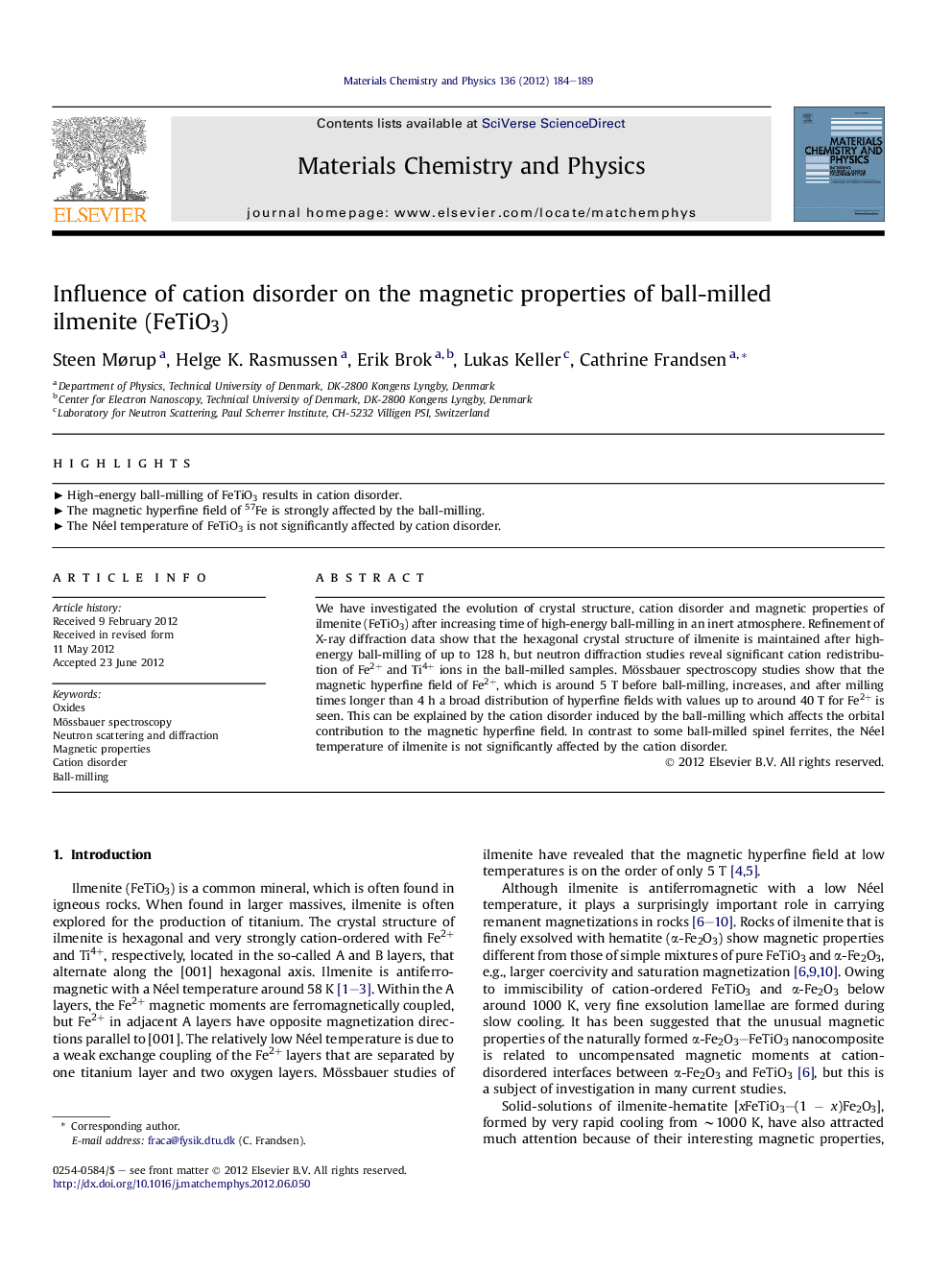| کد مقاله | کد نشریه | سال انتشار | مقاله انگلیسی | نسخه تمام متن |
|---|---|---|---|---|
| 1523792 | 995330 | 2012 | 6 صفحه PDF | دانلود رایگان |

We have investigated the evolution of crystal structure, cation disorder and magnetic properties of ilmenite (FeTiO3) after increasing time of high-energy ball-milling in an inert atmosphere. Refinement of X-ray diffraction data show that the hexagonal crystal structure of ilmenite is maintained after high-energy ball-milling of up to 128 h, but neutron diffraction studies reveal significant cation redistribution of Fe2+ and Ti4+ ions in the ball-milled samples. Mössbauer spectroscopy studies show that the magnetic hyperfine field of Fe2+, which is around 5 T before ball-milling, increases, and after milling times longer than 4 h a broad distribution of hyperfine fields with values up to around 40 T for Fe2+ is seen. This can be explained by the cation disorder induced by the ball-milling which affects the orbital contribution to the magnetic hyperfine field. In contrast to some ball-milled spinel ferrites, the Néel temperature of ilmenite is not significantly affected by the cation disorder.
► High-energy ball-milling of FeTiO3 results in cation disorder.
► The magnetic hyperfine field of 57Fe is strongly affected by the ball-milling.
► The Néel temperature of FeTiO3 is not significantly affected by cation disorder.
Journal: Materials Chemistry and Physics - Volume 136, Issue 1, 14 September 2012, Pages 184–189